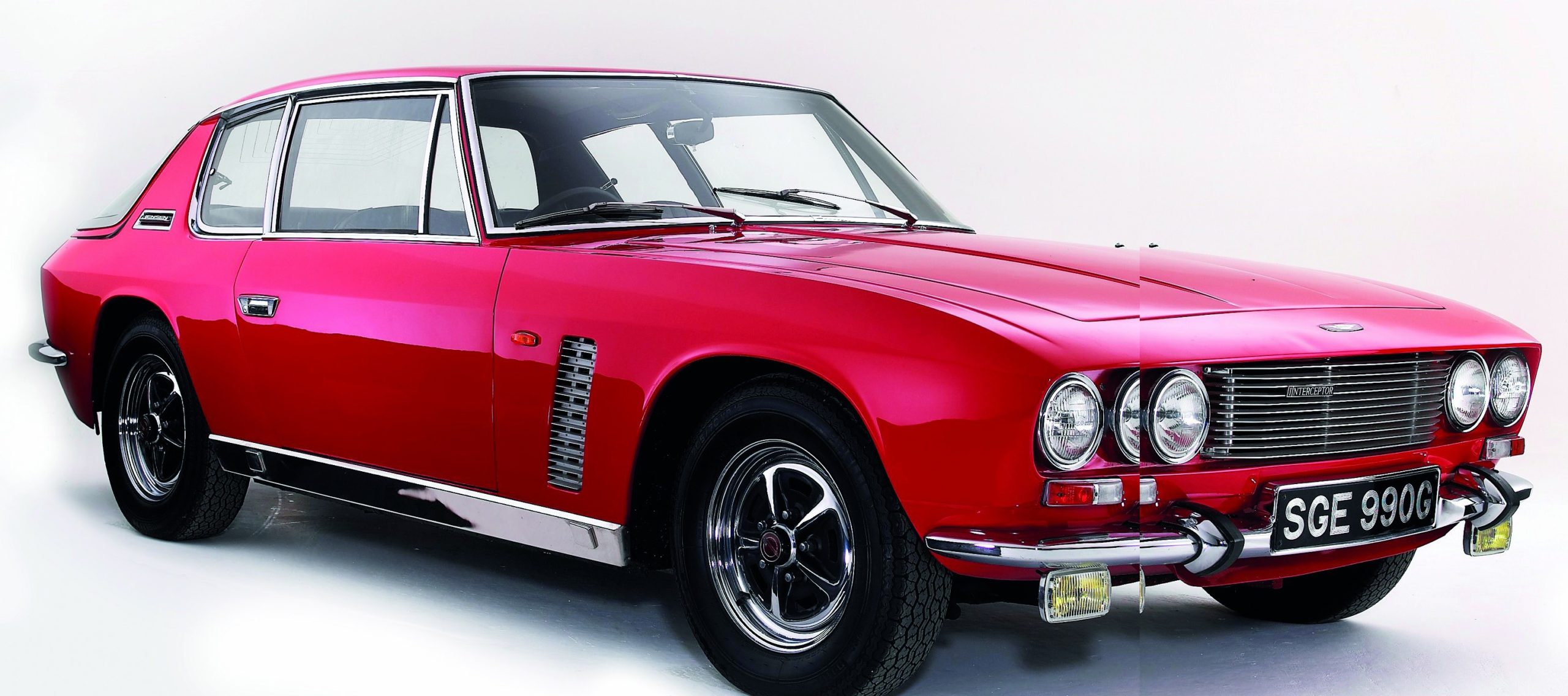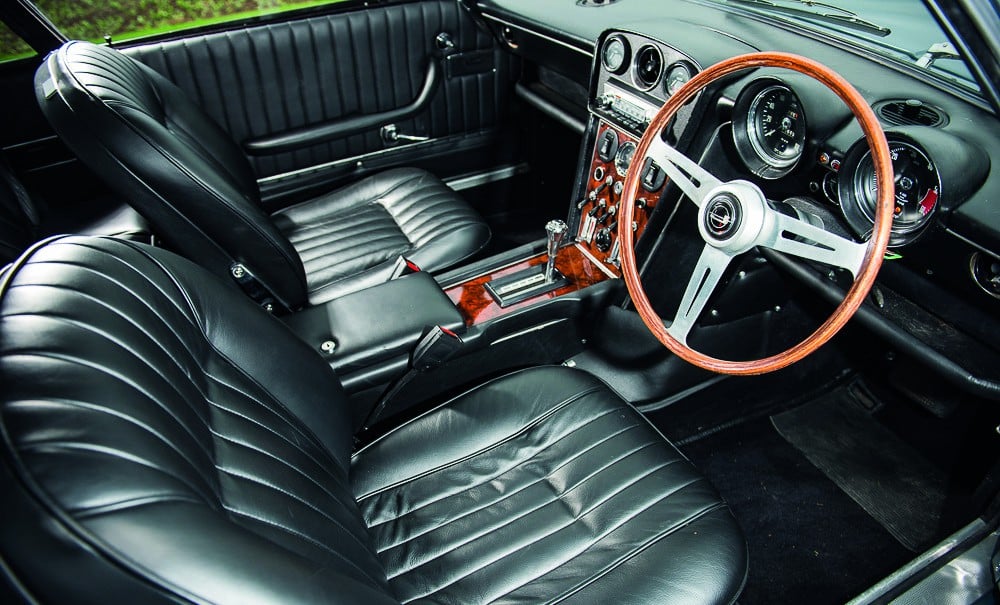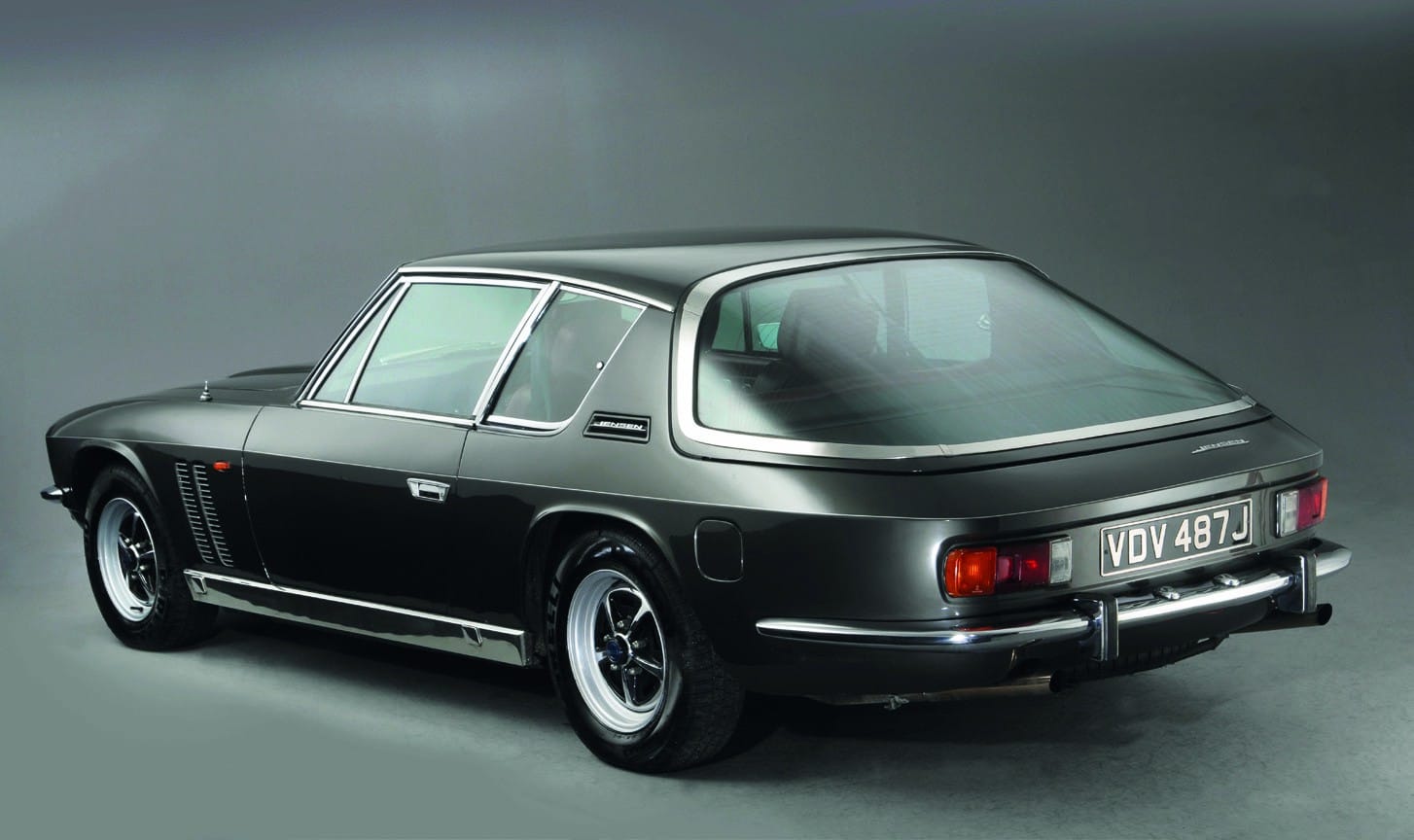Jensen Interceptor: Road car buying guide
Britain’s answer to the muscle car may have had its faults, but the Jensen Interceptor has an enduring cool

The car industry was an exciting place in the 1960s. Engineering and production techniques were improving rapidly and many brands opted to switch focus towards beautiful, svelte, sporty offerings such as the Jaguar E-type, Ferrari 250 and Porsche 911.
But the ’60s also gave rise to another automotive trend, the muscle car. The Ford Mustang, Dodge Charger and Pontiac GTO all arrived Stateside, boasting big-capacity thundering engines, striking looks and – importantly – affordable price tags.
The issue was, pure-bred muscle cars were largely confined to the US back then, with very few finding their way across the Atlantic. There was a niche in the British market for something similar: a big, brash, V8-engined GT. The Jensen Interceptor filled that gap brilliantly, and in doing so created perhaps the only model Jensen is remembered for.
At the time, Jensen was a small-volume manufacturer, producing mainly variants of its fibreglass-bodied, Austin-powered 541. But things began to change when customers of the 541S – the prettiest of the line – began to demand more power than its straight-six Austin could produce. Donald Healey was the most vocal, requesting the factory install a 327ci (5.3-litre) Chevrolet V8 into his personal 541S, and with that came a spark of inspiration.

The Interceptor came with all the trimmings, with later models even boasting air conditioning and anti-lock brakes
In its formative days, Jensen had largely used Ford V8s and, with American muscle being relatively cheap, it opted to do so again.
In 1962, Jensen ditched British motors altogether and made a new car, the C-V8, which all used big-block Chrysler Golden Commando V8s. The C-V8 made headlines by becoming one of the fastest production four-seaters available, but there were issues. The Eric Neale-designed body was very much an acquired taste, and it was still largely plastic. Jensen built 500, but a change was needed to take the brand truly mass-market, and it came from Italy.
Jensen went to design house Carrozzeria Touring, which penned a new, sleeker steel body to fit over the C-V8’s chassis. The skins were hand-constructed by coachbuilder Vignale and shipped back to Jensen’s West Bromwich factory for assembly. To complete the package, Jensen added a 6.3-litre Chevy V8, disc brakes all round and perhaps the coolest title ever given to a car. The original Interceptor had been a lukewarm Austin-based tin-top from 1950, and only 88 had ever been made, but this time the Interceptor name would be put to far better use.

Perhaps the Interceptor’s defining design feature is the stunning rear glass screen/tailgate, styled by Carrozzeria Touring in Italy
There were issues – such as inconsistent steering racks (some even came from the Triumph Stag, which were prone to disintegrate over time) and body corrosion – but that didn’t prevent huge sales.
“In creating the FF, Jensen made the world’s first all-wheel- drive road car”
The MkII arrived in 1969 with restyled headlights and interior changes designed to push the Interceptor to the American market, too. Then followed a convertible version, and finally the polished MkIII for 1971, which was the pick of the bunch with that distinctive flat and wide grille, GKN alloy wheels, air conditioning and a 385bhp 7.2-litre V8.
In total, Jensen produced over 6400 Interceptors before the company ran into financial trouble and eventually folded in 1976.
But just before Jensen shut its doors it had another trick for the Interceptor. Using a donor chassis extended by five inches, Jensen worked with Ferguson Research to install a four-wheel-drive system and Dunlop anti-lock brakes into a new version to be called the FF. In doing so, Jensen and Ferguson created the first road-focused car to feature all-wheel drive, pre-dating the AMC Eagle and Audi Quattro by 13 and 14 years respectively.
Only 320 FFs were made, with sales largely held back by customers having to fork out almost twice the price of the regular Interceptor and it having no provision for left-hand drive, which ruled out any expansion to the American or European market.
The Interceptor quickly gained a cult following, thanks to serial TV appearances in popular shows such as The Saint, and today there’s an entire industry dedicated to restoring or even replicating the model, proving its enduring appeal.
Jensen Interceptor
● Price new £5200
● Price now £40,000-£100,000
● Engine 5.9-7.2-litre Chevrolet V8s
● Rivals Ford Mustang, Sunbeam Tiger, Jaguar XJS
● Verdict Flawed, but since when has a muscle car ever been perfect?
